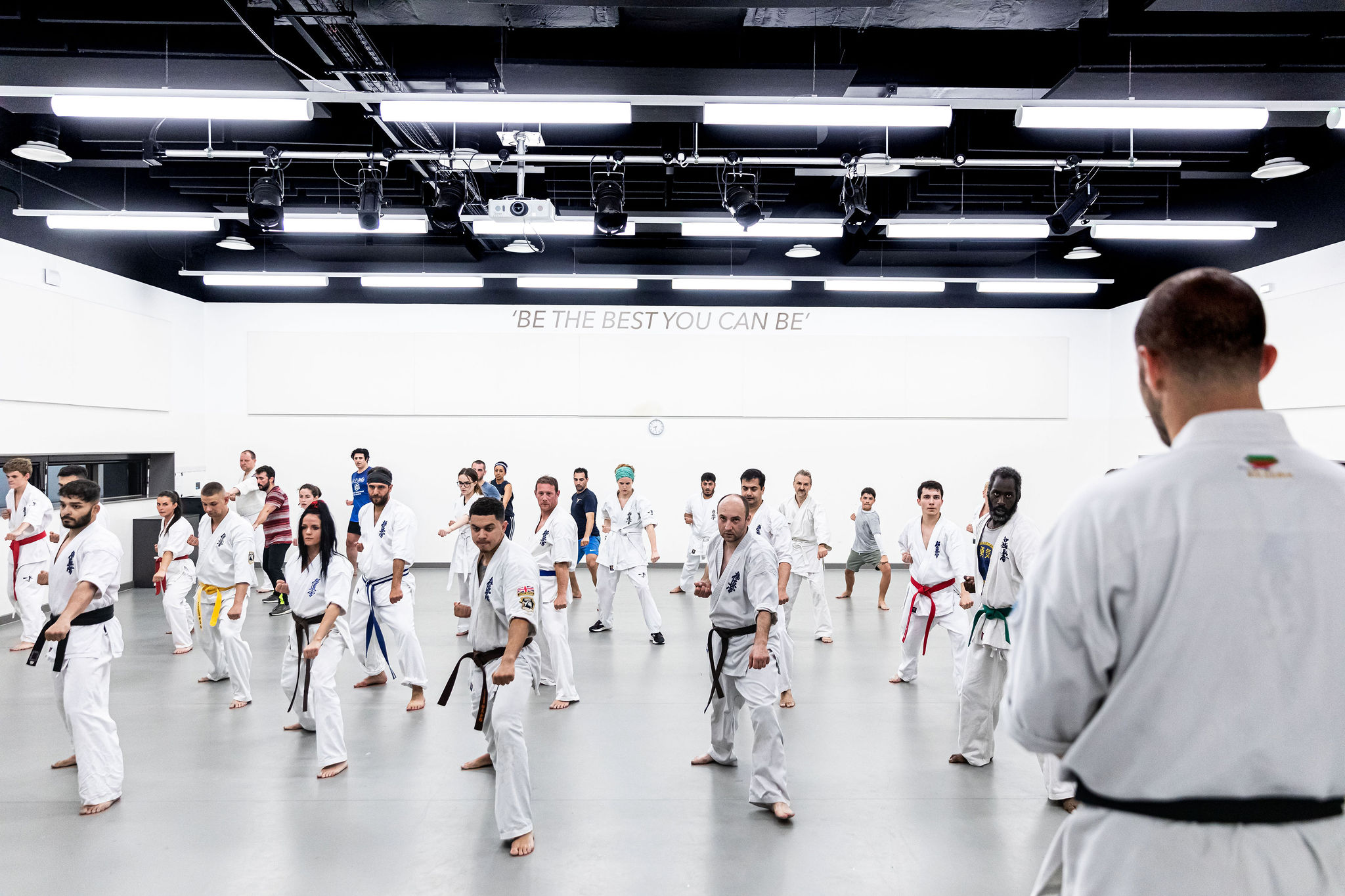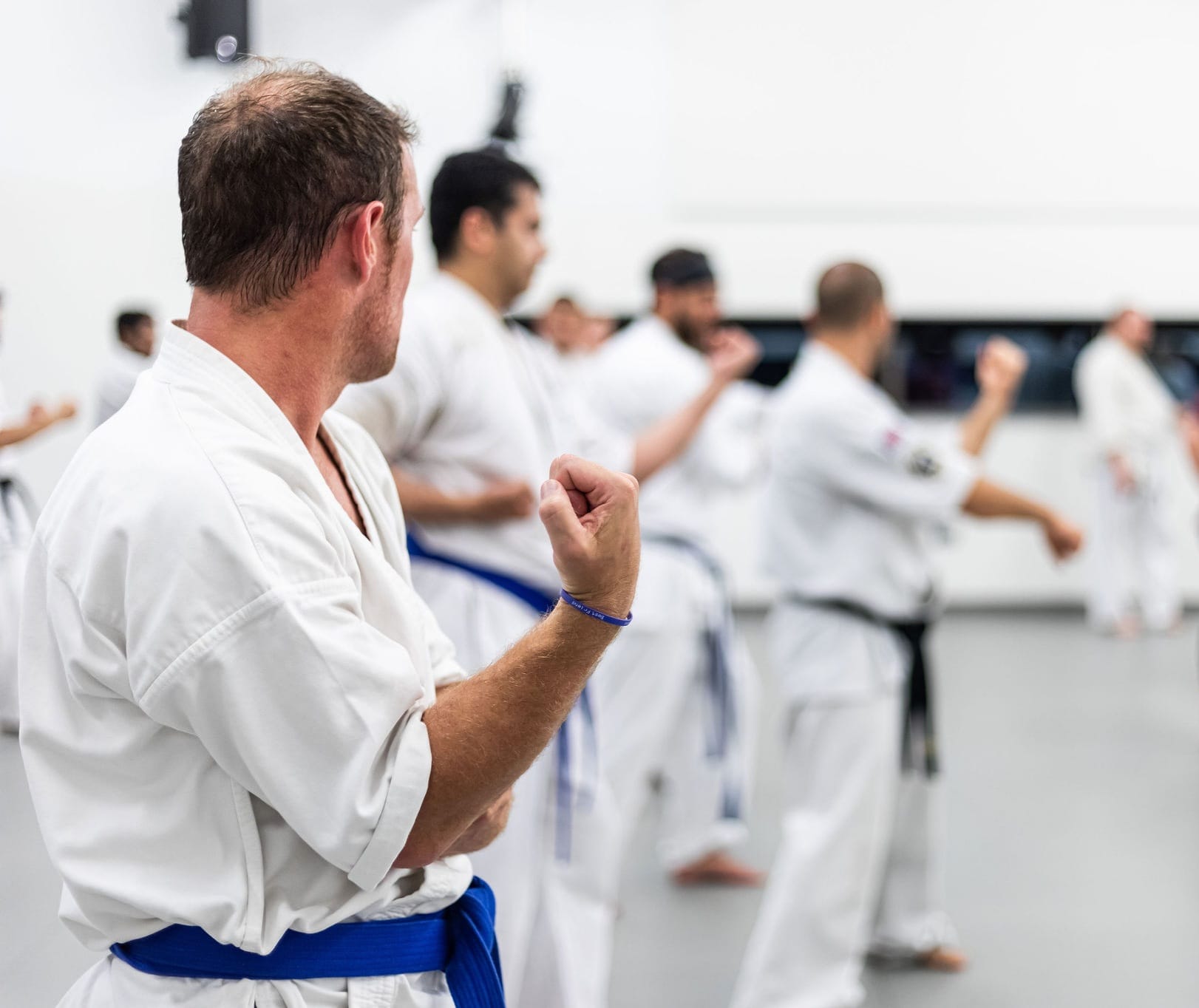Grading
General grading rules
Grading is a formal event where students are assessed and examined in order to progress to the next grade. Here at EMAR Dojo, we conduct regular grading exams for our students. Adults are graded on average twice a year. Children are graded three times per year, based on their progress from the previous exam.
Each candidate must have an up-to-date licence in order to attend grading. All candidates who are eligible to grade will be invited to test at the discretion of their dojo’s head instructor after following a strict syllabus. The Sensei in charge will take into consideration additional criteria such as behaviour, leadership skills, punctuality, teamwork, dedication, willpower and discipline. The attitude of the candidate is also of prime importance. Karate promotes being a good human being and this is what we look for in students when it comes to belt promotion.
Students will also need to complete certain physical tests as well as kata, kihon, controlled sparring (for advanced grades), flexibility, endurance and knowledge-based questions. There is a strict time period and class attendance criteria that needs to be covered between grades. All students will be provided with clear instructions outlining everything to be covered prior to grading exams.
The minimum age for a Senior Shodan (1st degree black belt) is 18 years of age. Once 18 years of age, they must retest to Senior (adult) Shodan to progress further. Students eligible for black belt testing under 18 years of age will be awarded Junior Shodan.
It is the instructor’s responsibility to put students forward for a grading exam. Your Sensei will decide when you’re ready to be graded, so students should not ask to be graded.


Grading criteria
A grading is an examination of all aspects of karate, for example, kihon (basics), kata, kumite, and so on. Each candidate must achieve the minimum level required for the particular grade attempted in each of the categories listed. It is not acceptable to be proficient in one area while lacking in others – e.g., strong in kumite and weak in kata. Dojo etiquette, manner and attendance are also taken into account.
Grading candidates will be chosen by your sensei according to your technical abilities, attitude, manners, etiquette, class attendance and period of training and age. In addition, senior grades from 5th Kyu upwards, are expected to attend seminars, international summer camps and tournaments as part of their training requirements towards their next grading. It is mandatory for the student to show improvement from their last grading before they can attend the next grading.
Belt system
Our belt system (kyu grades) progresses with colour, each colour gradually becoming darker. There are seven colours, like the seven codes of Budo: white, red, blue, yellow, green, brown and black. Once at green belt level students are considered seniors, and may be referred to as Senpai. At black belt level grades will increase in Dan. The title of Sensei may be used from first Dan and above, depending on the student’s age and responsibilities.
Remember that personal development is at our heart, not elitism. Students must never look at another Karateka and judge them on their technique. Time, attitude, commitment to the school, and striving for correct form will have played an immense part in their grade.
After joining our team, we’ll give you access to our dojo app where you’ll find a complete syllabus with a detailed explanation of everything you’ll need to know for your grade test.


Looking after your belt
The obi (karate belt) must be kept tidy, and never thrown on the floor. A student should never wear another karateka’s obi ,or a grade above their own. In public(i.e., going to/from the Dojo) studentss are discouraged from displaying their belts.How to look after the kKarate oObi is a topic of dispute. Some believe the belt should never be washed, only air dried, as it will take away the knowledge and heart of the student. Others see no harm in periodically washing it lightly to maintain cleanliness and hygiene. We feel that students should make their own decision in this regard.


